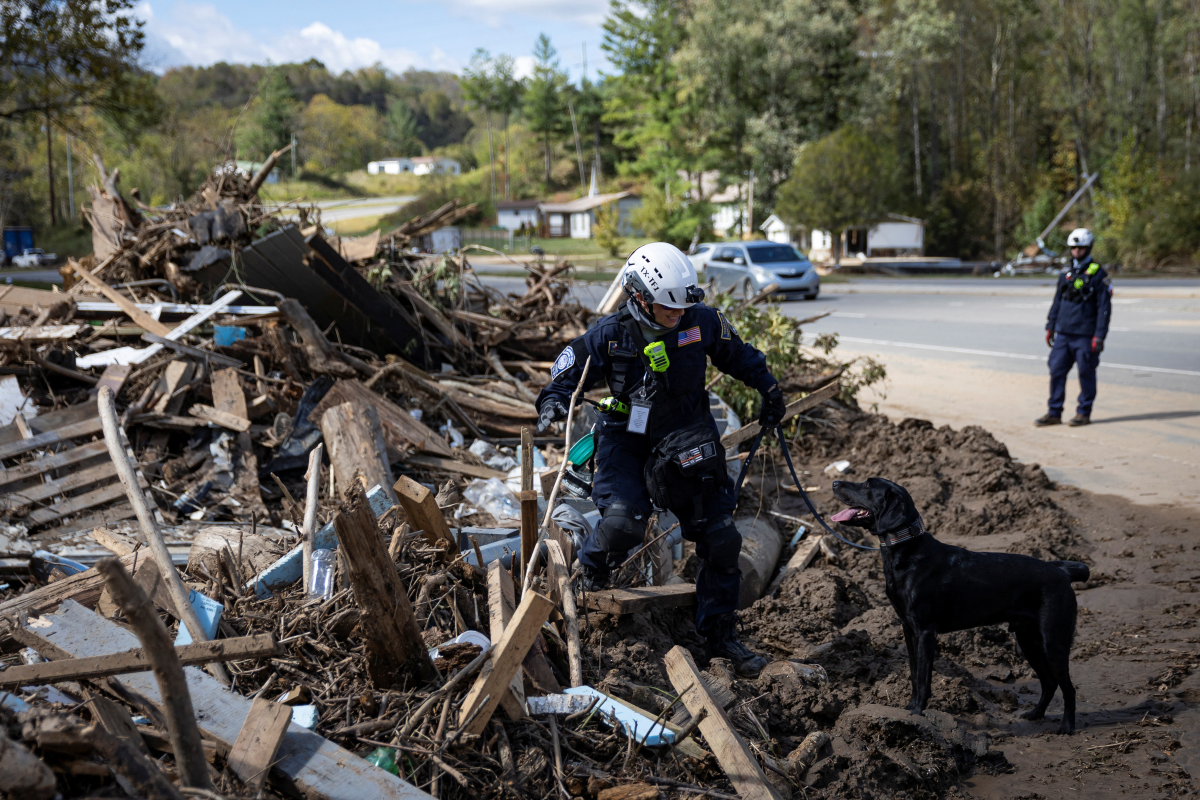If you're frustrated by one-sided reporting, our 5-minute newsletter is the missing piece. We sift through 100+ sources to bring you comprehensive, unbiased news—free from political agendas. Stay informed with factual coverage on the topics that matter.
“Great leaders are willing to sacrifice their interests for the good of the team.”
– John Wooden
THE ART OF LEADERSHIP
Are Great Leaders Willing to Sacrifice Personal Interests for the Team?
Unpacking John Wooden's Insight on Leadership
John Wooden once said, “Great leaders are willing to sacrifice their interests for the good of the team.” This statement invites us to reflect deeply on the nature of leadership and the balance between self-interest and collective success. In a world that often emphasizes individual achievement and personal ambition, what does it truly mean for a leader to put the team's needs above their own?
Consider the challenges leaders face when their goals conflict with the team's welfare. Is it realistic or even fair to expect leaders to set aside personal aspirations? Or is the essence of leadership found precisely in this act of selflessness? Some might argue that personal drive fuels progress, but others believe that a leader's true legacy is defined by the success and well-being of their team.
In today's competitive landscape, how can leaders navigate the tension between pursuing personal advancement and fostering a collaborative environment? Do we have examples of leaders who have successfully balanced these aspects, or even sacrificed their interests entirely for their team?
We invite you to share your thoughts and experiences. Do you agree with Wooden's assertion? How does this principle apply in your professional or personal life? Let's engage in a conversation about the sacrifices great leadership may demand and explore what it takes to lead effectively in our modern context.
COMMERCIAL CONSTRUCTION
Did You Know a Single Call to DIGLINE Could Prevent Disaster?
Uncover How This Free Idaho Service Protects Us All!
Have you ever stopped to think about the labyrinth of utilities buried just beneath our feet? From gas lines to internet cables, these underground facilities are the lifelines of our daily lives in Idaho. Yet, with one wrong move during excavation, these essential services could be disrupted or worse, cause a dangerous accident. So, how do we safeguard against such risks? The answer is simpler than you might think: DIGLINE, Inc.
Established in January 1990, DIGLINE serves as Idaho's one-number, centralized call center for the "Call Before You Dig" process, covering 39 of the state's 44 counties. Available 24/7, including holidays, this Idaho-owned and operated service enables property owners, contractors, and excavators to notify underground facility owners of planned digging activities with just one call.
Here's how it works: At least two business days before starting any excavation, you submit a locate request to DIGLINE either by phone or through their website. Their Damage Prevention Specialist staff then processes your request and notifies all underground facility owners in your excavation area. Each facility owner dispatches utility locators either their staff or contracted professionals to mark where their facilities are buried. These markings, often made with paint, stakes, or flags, guide you to dig safely, avoiding dangerous and costly damages.
What's more, DIGLINE's service is completely free to use. Utility companies and underground facility owners fund DIGLINE to provide this essential service at no cost to callers. This centralized system not only saves time and money for both facility owners and excavators but also plays a critical role in community safety and the uninterrupted delivery of services we often take for granted.
So, the next time you're planning a project that involves digging even if it's just planting a tree ask yourself: Have you contacted DIGLINE? Taking this simple step can prevent accidents, save money, and ensure that our community's underground infrastructure remains secure. It's a conversation worth having, and a call worth making.
Join the discussion on safe digging practices and help spread the word about this invaluable resource. Your proactive steps today can prevent tomorrow's problems.
Ever thought about the hidden network of utilities right below us? DIGLINE, Idaho’s free “Call Before You Dig” service, protects us all. Have you ever used it?
#SafeDigging #CallBeforeYouDig #DIGLINE
— #The Dig Daily Dose (#@TheDigDailyDose)
2:38 AM • Oct 31, 2024
INFRASTRUCTURE INDUSTRY
Hurricanes Helene & Milton Spotlight Urgent Gaps in U.S. Disaster Prep
Is It Time for a National Strategy Shift?
The catastrophic impacts of Hurricanes Helene and Milton have spurred a fresh debate on U.S. disaster readiness. With over 230 lives lost and entire communities left inaccessible, experts are questioning the nation's current approach. "Our focus on relief over resilience leaves us exposed," said Chad Berginnis of the Association of State Floodplain Managers, emphasizing the need for proactive measures.
One critical issue highlighted is the outdated nature of FEMA’s flood maps, which only reflect risks with a 50% confidence level. "It's like making high-stakes decisions on a coin flip," remarked Joel Scata from the NRDC. He advocates for congressional support to enhance FEMA's accuracy to 95%, ensuring that decisions reflect genuine risk. Meanwhile, FEMA’s funding constraints have stalled preventive projects, forcing the agency to prioritize emergency responses instead.
Berginnis suggests simple steps, like using high-water marks from past floods to redefine at-risk areas. Yet, some states resist strengthening building codes; North Carolina recently passed legislation making it harder to update such standards until the 2030s. Critics argue this rollback could jeopardize federal disaster funds, as FEMA’s BRIC program prioritizes states with robust codes.
Former FEMA administrator Craig Fugate calls for a more inclusive disaster strategy, incorporating agencies beyond FEMA. Programs from HUD and the SBA are crucial in recovery efforts, offering flexible funding to meet immediate needs. "FEMA alone can't rebuild lives," Fugate said, proposing partnerships with these agencies as vital to recovery.
The devastating season suggests that without serious policy shifts and investments in preventive infrastructure, the U.S. may face even costlier consequences.
With Hurricanes Helene and Milton revealing gaps in disaster prep, should the U.S. shift from relief-focused aid to resilience? What would help most?
#DisasterPrep #Resilience #PolicyShift
— #The Dig Daily Dose (#@TheDigDailyDose)
2:37 AM • Oct 31, 2024
RESIDENTIAL RESEARCH
Ancient Wisdom Defies Hurricanes
How an 18th Century Florida House Survives Storms with a 1930s Chain System
In the heart of St. Augustine, Florida, stands the Genopoly House, a wooden relic from the 18th century. Despite its age and lack of a foundation, it has withstood countless hurricanes thanks to an unconventional but effective system introduced in the 1930s. This story, recently shared on social media, has sparked widespread fascination, as many were surprised to learn that the building’s decorative-looking anchor serves a practical purpose.
The Genopoly House, known as the Oldest Wooden School House, first appeared in records in 1716, though its exact construction date is unknown. Purchased in the 1780s by Juan Genopoly, a Minorcan immigrant, this building served as a family home and school, embodying the resilient spirit of Florida’s early settlers. But the structure’s true resilience was put to the test in the face of hurricanes that frequently batter the state.
In 1937, local businessman Walter B. Fraser, who had acquired the property six years earlier, took a bold step to protect the foundationless building. Fraser hired an engineer to install a large anchor and chain to keep the house in place during fierce storms, ensuring the safety of the Genopoly House, even during Hurricane Irma in 2017, when other structures nearby suffered damage.
Tourists and history buffs alike are now flocking to the Genopoly House, intrigued by its unusual hurricane-proofing method. The viral video, with over a million views, captured reactions of surprise and admiration, with one viewer remarking, “I thought it was just thematic decor. It’s purposeful. Cool!”
Florida, the state hardest hit by hurricanes in the U.S., sees its peak storm season from mid-August through October, with warm Gulf and Atlantic waters fueling the storms. Despite this, the Genopoly House stands as a testament to how simple ingenuity dating back almost a century can protect against nature’s most powerful forces.
How can centuries-old engineering techniques, like the 1930s chain system in St. Augustine’s Genopoly House, teach us about resilience in hurricane-prone regions?
#AncientResilience #FloridaHistory #HurricaneProof
— #The Dig Daily Dose (#@TheDigDailyDose)
2:35 AM • Oct 31, 2024
TOOLBOX TALK
The Importance of Scaffold Safety on Construction Sites
Introduction
Good morning, Team! Today, we’re focusing on an important safety topic: scaffold safety. Scaffolds are essential for working at heights and accessing hard-to-reach areas, but improper setup or use can lead to serious injuries or even fatalities. Falls from scaffolding are one of the most common causes of construction injuries. Understanding scaffold safety and following proper procedures is crucial to keeping everyone safe on the job.
Preventing Incidents: The Role of Scaffold Safety
Scaffolding hazards often result from improper assembly, lack of guardrails, or failure to use personal protective equipment (PPE). By ensuring scaffolds are set up correctly and used with caution, we can prevent incidents and maintain a safer work environment.
Strategies for Scaffold Safety
Inspect the Scaffold Before Use: Before using a scaffold, check that it has been properly assembled, is level, and is on stable ground. Look for any damaged parts, missing planks, or loose connections. Do not use a scaffold that hasn’t been inspected and approved for use.
Use Guardrails and Fall Protection: Guardrails should be installed on all open sides of the scaffold. When working at heights of 10 feet or more, wear a harness and use a fall arrest system if required. Always anchor your harness to a secure point on the scaffold.
Keep the Work Area Clear of Debris: Ensure the scaffold platform is free from clutter, tools, and materials that could cause tripping or falls. Keep materials organized to prevent items from falling on workers below.
Never Overload the Scaffold: Each scaffold has a specific load capacity. Avoid placing heavy materials or equipment on the scaffold platform that could exceed this limit, as it could lead to structural failure.
Climb Safely and Avoid Using Improvised Ladders: Use the designated access points, such as ladders or stairs, to climb up or down the scaffold. Avoid climbing the scaffold’s cross braces, and never use makeshift ladders or boxes to extend your reach.
Discussion Questions
Have you or a coworker encountered a scaffold-related hazard on-site? How was it handled, and what could have been done differently?
What precautions do you take when using scaffolding for your tasks?
How can we improve our scaffold safety practices on the job site?
Conclusion
Scaffold safety is critical to preventing falls and maintaining a safe work environment. By inspecting scaffolds before use, using guardrails and fall protection, keeping platforms clear, following load limits, and climbing safely, we can reduce the risks associated with working at heights. Let’s all commit to following scaffold safety practices and looking out for one another on the job.
Work smart, and stay safe!










